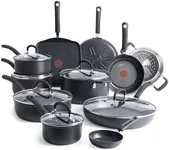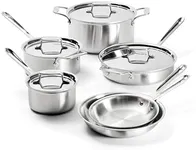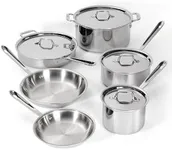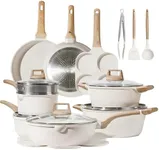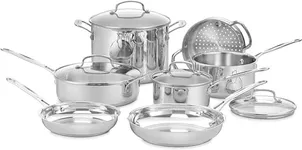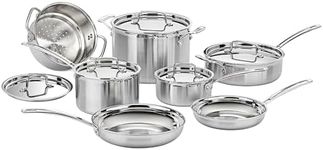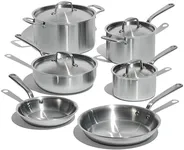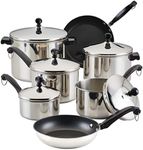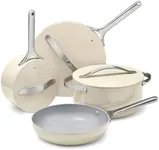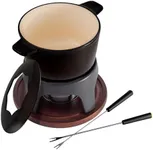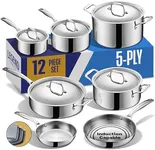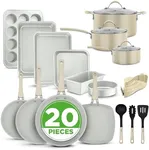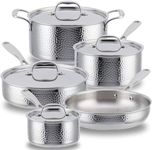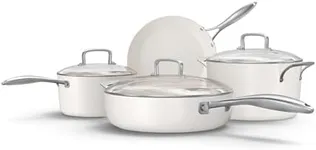Buying Guide for the Best Pots and Pans Sets
Choosing a pots and pans set is an important step for anyone who cooks at home, whether you're a beginner or an enthusiast. The right set can make cooking more enjoyable and efficient, while the wrong one can cause frustration and inconsistent results. It's important to consider your cooking habits, the types of dishes you commonly make, and your kitchen setup before making a decision. Understanding the key features will help you narrow down your options and select a set that suits your needs best.MaterialThe material of pots and pans affects heat distribution, cooking performance, durability, and ease of cleaning. Common materials include stainless steel, nonstick coatings, aluminum, copper, and cast iron. Stainless steel is durable and resists rust, but may not heat evenly unless it has a layered base. Nonstick pans are easy to clean and great for low-fat cooking, but can wear out over time. Aluminum heats quickly and evenly, but may react with acidic foods unless coated. Copper provides precise temperature control but needs regular maintenance to prevent tarnish. Cast iron is heavy but holds heat well, making it ideal for slow cooking and searing. Think about your cooking style and preferences when deciding on the material.
Number of PiecesA set’s size can range from a minimalist three pieces to large collections with fifteen or more. More pieces offer greater flexibility, but might take up more storage and include items you rarely use. If you’re an occasional cook, a small set with just the basics (like a saucepan, frying pan, and stockpot) is often enough. Enthusiastic home cooks who prepare a variety of dishes may appreciate larger sets with specialized pieces such as sauté pans or steamer inserts. Consider the space in your kitchen and the types of meals you make to choose the right amount.
Oven and Dishwasher CompatibilitySome pots and pans are safe for use in the oven and dishwasher, while others are not. Oven-safe cookware lets you start dishes on the stove and finish them in the oven, offering versatility for recipes like casseroles or skillet bakes. Dishwasher-safe items make cleanup easier but may affect the longevity of nonstick surfaces. Check the manufacturer’s guidelines to make sure the set matches how you’ll use and clean your cookware, especially if you want the convenience of oven or dishwasher use.
Lid Type and FitLids come in glass or metal, and a proper fit helps retain moisture and heat while cooking. Glass lids let you check food without lifting and losing heat, but can be heavier and prone to breaking. Metal lids are durable but don’t allow you to see inside. A snug-fitting lid is key for simmering, braising, or cooking rice. Think about the types of dishes you prepare and whether visibility or durability matters more to you.
Handle Design and ComfortHandles are vital for safety and ease of use, and they can be made from metal, plastic, or silicone. Metal handles let pans go from stovetop to oven but can get hot, requiring oven mitts. Silicone or plastic stays cool, making them safer to grip, but may limit oven use. The shape and balance of the handle also affect comfort and control while lifting or pouring. If you do a lot of transferring between the oven and stovetop, or have concerns about grip, look for ergonomically designed, securely riveted handles.
Cooktop CompatibilityNot every set works on all types of cooktops. Some cookware, especially if it isn’t magnetic, won’t work on induction ranges. Flat and sturdy bases are necessary for smooth electric or glass cooktops to avoid scratching and ensure even heat distribution. If you have or plan to get a specific cooktop (gas, electric, induction), make sure your chosen pots and pans are designed for compatibility.

